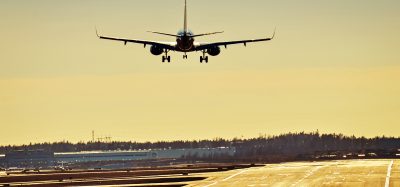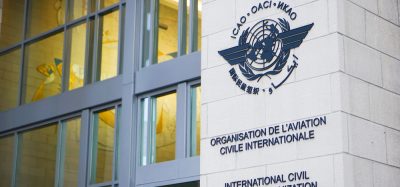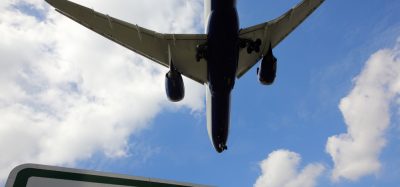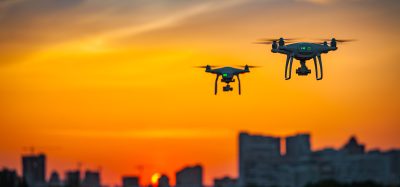Being safe in Sydney
- Like
- Digg
- Del
- Tumblr
- VKontakte
- Buffer
- Love This
- Odnoklassniki
- Meneame
- Blogger
- Amazon
- Yahoo Mail
- Gmail
- AOL
- Newsvine
- HackerNews
- Evernote
- MySpace
- Mail.ru
- Viadeo
- Line
- Comments
- Yummly
- SMS
- Viber
- Telegram
- Subscribe
- Skype
- Facebook Messenger
- Kakao
- LiveJournal
- Yammer
- Edgar
- Fintel
- Mix
- Instapaper
- Copy Link
Posted: 3 August 2012 | Mark Von Nida, Fire Superintendent at Airservices Australia | No comments yet
Airservices Australia’s Aviation Rescue and Fire Fighting (ARFF) service at Sydney Airport is just one of 21 fire stations at international, domestic and regional airports located through – out the country.
Airservices Australia employs over 740 highly trained and experienced aviation fire fighting and technical personnel operating 113 high per – formance fire vehicles, specialised difficult terrain vehicles and specialised water rescue boats. This makes Airservices Australia ARFF larger than some Australian state or territory fire services.
ARFF’s mission is to rescue people from an aircraft accident or fire and protect property from fires on the airport. With a proud 65-year history of protecting Australian aviation, Sydney ARFF has been a dedicated airport fire service since 1947. As one of the oldest continually operated airports in the world, the first flights from Sydney Airport at Mascot were in 1919 and today Sydney currently ranks as the world’s 28th busiest airport.
Airservices Australia’s Aviation Rescue and Fire Fighting (ARFF) service at Sydney Airport is just one of 21 fire stations at international, domestic and regional airports located through – out the country.
Airservices Australia employs over 740 highly trained and experienced aviation fire fighting and technical personnel operating 113 high per – formance fire vehicles, specialised difficult terrain vehicles and specialised water rescue boats. This makes Airservices Australia ARFF larger than some Australian state or territory fire services.
ARFF’s mission is to rescue people from an aircraft accident or fire and protect property from fires on the airport. With a proud 65-year history of protecting Australian aviation, Sydney ARFF has been a dedicated airport fire service since 1947. As one of the oldest continually operated airports in the world, the first flights from Sydney Airport at Mascot were in 1919 and today Sydney currently ranks as the world’s 28th busiest airport.
On the shores of Botany Bay, approximately eight kilometres south of the city’s central business district, Sydney is Australia’s inter – national gateway and primary airport. As a major employer in the state, the airport contributes substantially to local and national economies equivalent to six per cent of the New South Wales (NSW) economy translating into more than 75,000 direct jobs and 131,000 indirect jobs. In 2010, the airport moved 35.6 million passengers on 308,914 flights. It handles 45 per cent of Australia’s international and 23 per cent of its domestic air traffic.
Providing a Category 10 service between 5am and 11pm and a Category 9 service during curfew hours of 11pm to 5am, Sydney ARFF has 85 full time operational fire fighting staff, maintaining two fire stations. Category 10 staffing comprises four officers and 13 fire fighters on duty while Category 9 has three officers and 10 fire fighters.
Now equipped with four new Mk8 Panther ultra-large specialist aviation fire vehicles, made by Rosenbauer in Austria, Sydney ARFF is currently in the process of completing a fleet replacement programme. The Mk8s have a capacity of 8,900 litres of water, 1,340 litres of foam, 225 kilograms of dry chemical powder and are powered by a 665hp six cylinder Detroit 60 DDEC IV power train. A fifth and sixth Mk8 are due to arrive in Australia by July and December 2012.
To complement its Mk8s, and for dealing with the risk posed by Category 10 aircraft operations, Airservices Australia has also introduced a Morita turntable ladder platform referred to by Sydney ARFF as the aerial specialist vehicle.
Sydney ARFF responds, on average, to around 2,000 emergency calls per year. Due to the large volume of domestic incidents responded to, a dedicated Domestic Response Vehicle (DRV), an urban type fire pumper, is one of the busiest vehicles at the station. A large percentage of these calls are to automatic fire alarms at airport buildings and to assist in first aid medical calls for passenger and airport staff. Staffing on the DRV is maintained above what is required, so the large number of emergency responses does not interfere with Sydney ARFF maintaining their airport category.
The DRV is fully equipped with rescue, structural fire fighting and emergency medical first responder equipment usually found on urban fire tenders. ARFF fire fighters are all qualified in senior first aid, with advanced resuscitation techniques and automated defibrillator application training.
Being situated in the middle of Botany Bay, a significant amount of aircraft arrivals and departures into Sydney Airport take place over water. As a result, ARFF Sydney maintains two rescue launches which are moored between the two main parallel runways in good weather. Aviation Rescue One is a 7.8 metre Marlin Broadbill Catamaran while Aviation Rescue Two is a smaller 5.3 metre single hull Stabicraft. These two vessels carry 12 20-person aviation rescue platforms (ARPs) between them. Nominal rescue capability of 20 persons each means up to 240 passengers can be removed from the water to await further rescue. Another 12 ARPs are available at the fire station for deployment if required.
With a significant amount of resource co-ordination required for a major incident, Sydney ARFF is equipped with an Incident Command Vehicle. The vehicle, called AVCOM, is equipped with two work stations, laptop computers, a printer, fax, scanner and photo – copier, white boards and an array of radios, mobile phones and a satellite phone.
Sydney ARFF is the combat agency for any aviation incident on the airport and up to one kilometre from the airport boundary. The NSW Police Force is the co-ordination authority and takes an overall command role at major aviation incidents. ARFF also has an audio bridge system in place with the Metropolitan Fire and Rescue NSW which allows the two fire services to communicate with each other on their own radio systems.
Airservices’ fire fighters, like all other Australian fire fighters, are trained under the Australian Public Safety Training Competencies. A base fire fighter leaves their 10-week recruit course with a Certificate 2 in fire fighting. Over the next few years they advance to a Leading Fire Fighter and obtain a Certificate 3 in fire fighting.
The first step towards becoming an officer at Sydney ARFF is the Certificate 4 in fire fighting supervision which, on successful completion, will hold the rank of Sub Station Officer. Station Officers and Fire Commanders in ARFF are qualified to Diploma of Fire Management level, while senior Fire Commanders and all of the above positions are qualified to an Advanced Diploma level. This represents a significant investment in staff development and profess – ionalisation of the ARFF service in Australia.
Airservices Australia has recently implemented a Compartment Fire Behaviour Training (CFBT) programme for its entire staff. The ARFF CFBT is based on the already established and proven Fire and Rescue NSW levels 1 and 2 programmes. This requires a purpose built flashover cell where fire fighters are trained how to recognise the potentially lethal fire phenomena and deal with it in a safe and effective manner.
With statistics suggesting 70 per cent of all aircraft accidents occur at an airport, the highly trained and well equipped fire crews at Sydney ARFF are on standby to respond anywhere on the airport within three minutes of a call for help.
About the author
Mark Von Nida commenced service with ARFF in 1988 working in all operational fire fighting positions at airport fire stations across Australia including Mount Isa, Brisbane, Alice Springs, Mackay, Perth and Sydney (current). Currently the Superintendent in charge of the Sydney ARFF, Mark has a Master’s Degree in Leadership and Management from the Charles Sturt University and is currently completing a second Master’s in Emergency Management. He has an Advanced Diploma of Fire Management, a Diploma of Health Studies (Ambulance) and is a Graduate in the Institution of Fire Engineers.
















